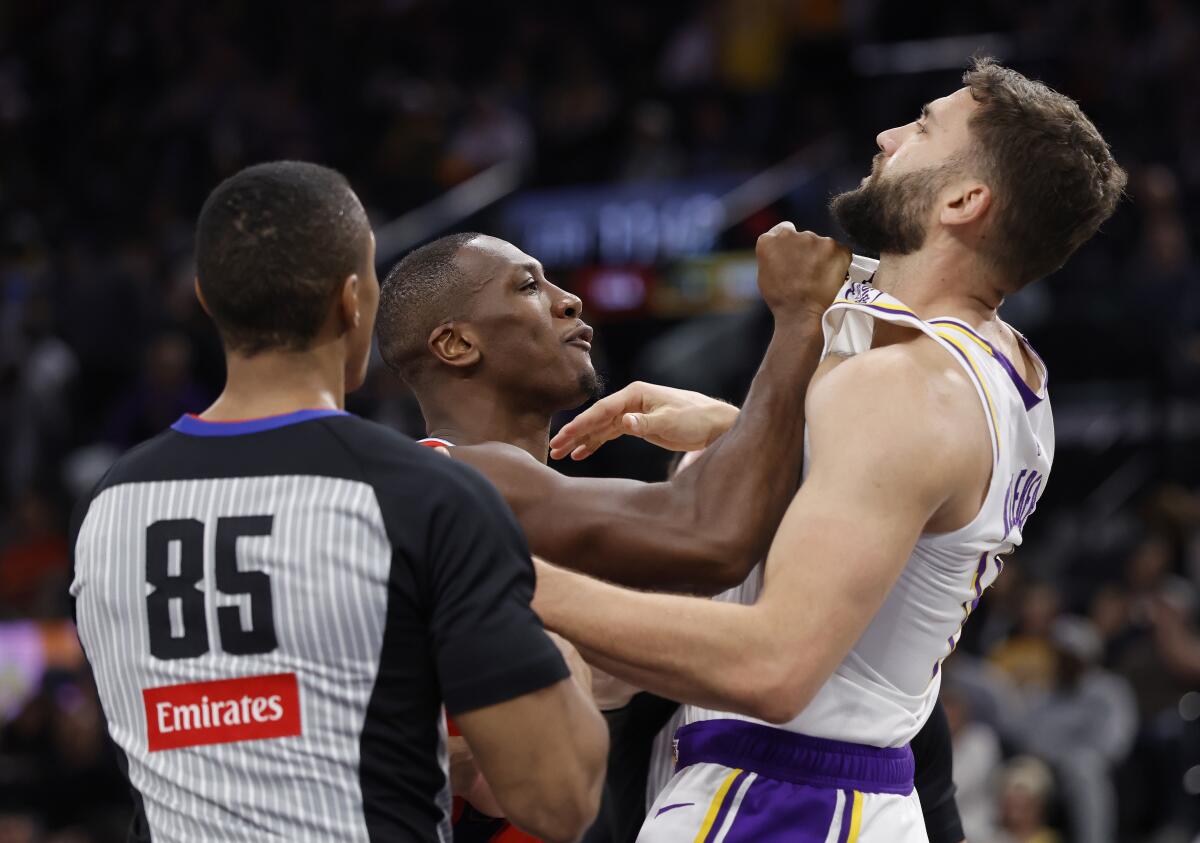Lakers vs. Clippers takeaways: Lakers seek consistency from refs

Clipper Kris Dunn grabs Laker Maxi Kleber ‘s jersey in front of a ref Saturday at the Intuit Dome.
(Ronald Martinez / Getty Images)
The Lakers have been assessed five technical fouls in the last two games because of conduct with officials as frustration over inconsistent calls is starting to boil over. After Doncic, Jaxson Hayes and Marcus Smart were all given technical fouls in the third quarter of Thursday’s win over Utah, Doncic and Smart were T’ed up again Saturday in the first and third quarters, respectively.
“I think if any coach, any player, what we ask for is consistency,” Redick said. “And that’s not to single any official out or any crew out, it’s not about that. We need to know what it is night to night.”
Smart also drew a technical foul against Utah after attempting to talk to an official at halftime. When Smart walked away frustrated, he raised his middle finger toward the official, a gesture that got him fined $35,000 Saturday, the NBA announced.
“Sometimes you got to take the hit to get your point across,” Smart said Saturday.
Redick expressed additional frustration with the lack of transparency in the replay system and murky communication with officials. He said he has not received any feedback when he requests it and the distinction between plays that can and can’t be challenged appears to change every night.
The lack of communication has been frustrating for players as well, Smart said, who met with referees before the Utah game as a team captain, but still had his questions dismissed.
“The captain should be able to come talk to them,” Smart said. “They still don’t want to hear it. So control what you can control. They don’t want to talk, you know, you try and you move on. But it definitely is frustrating when you pour your heart out to this game and the feedback is literally waving you off, telling you to get out your face, and then giving you a tech because you’re asking a simple question.”
